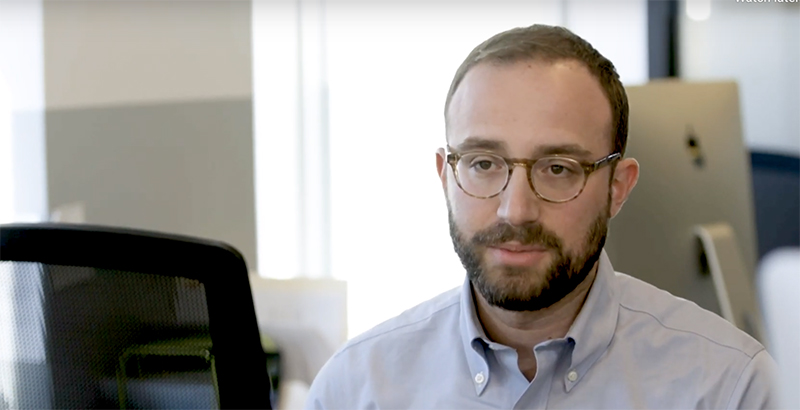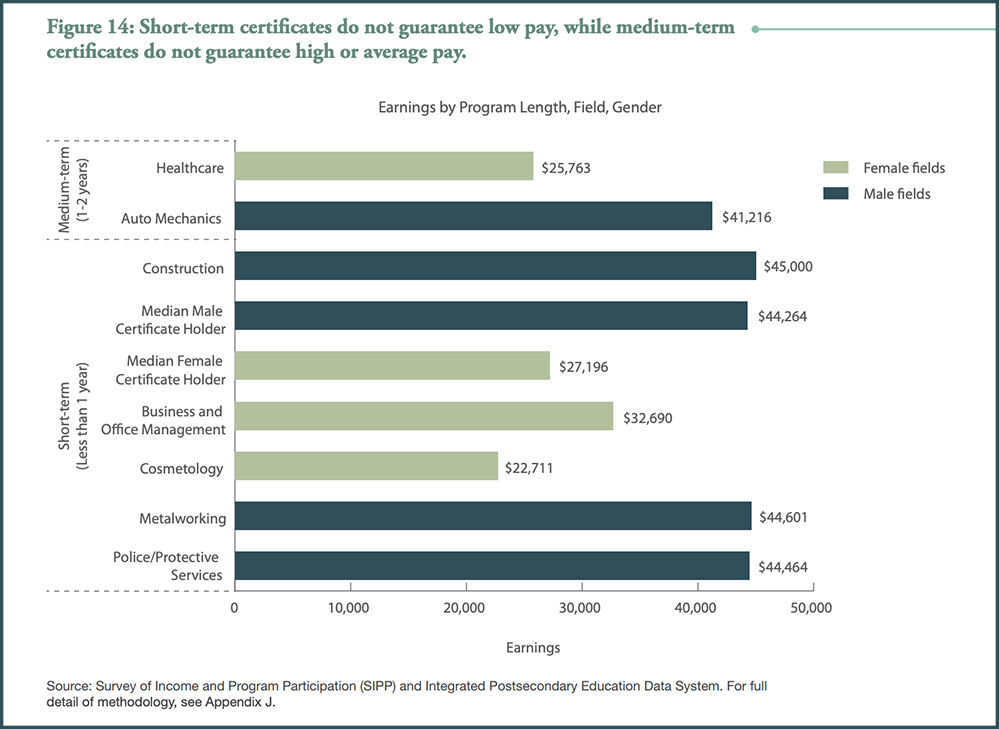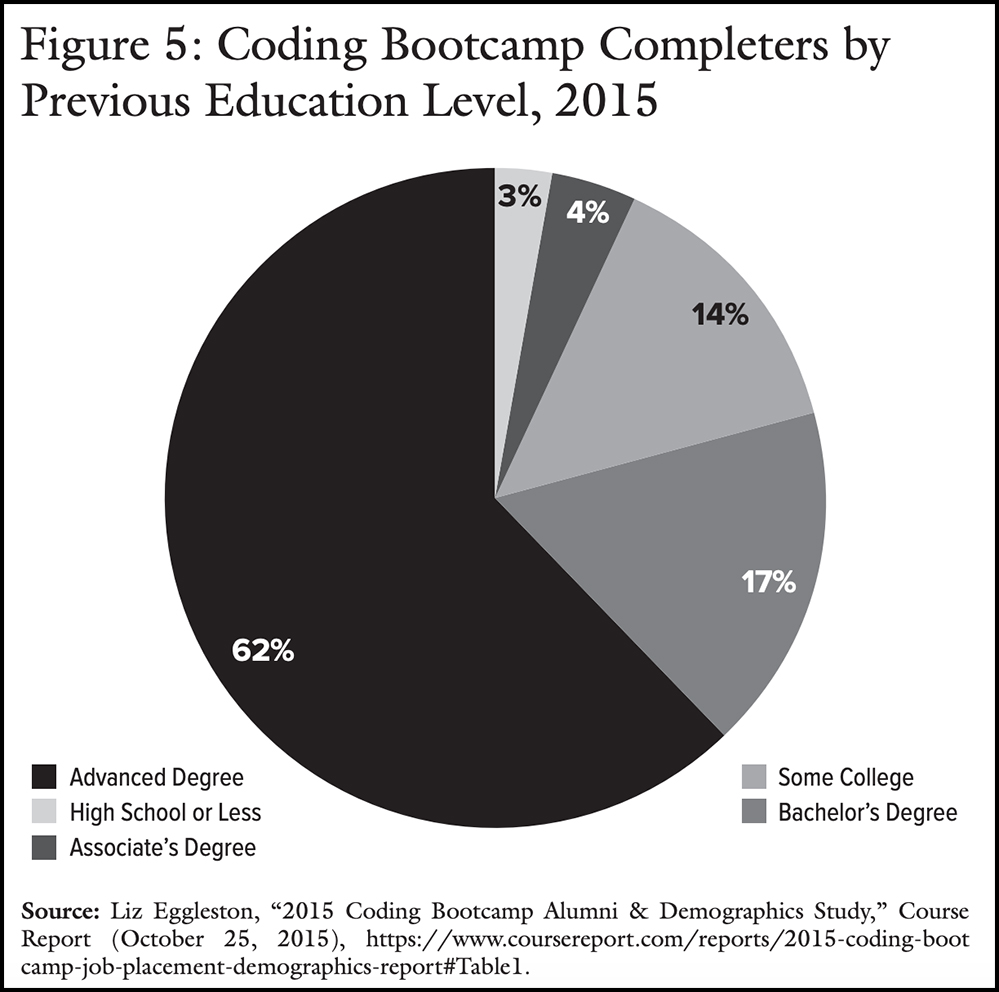The 74 Interview: Researcher Martin Kurzweil on Why More Data is Needed to Prevent Fraud and Confusion in the Non-Degree Credential Landscape

About half of America’s jobs require some education beyond a high school diploma but less than a bachelor’s degree. Countless programs offering online courses, tech skills, certificates and other credentials promise to help people access these opportunities, but getting reliable information about the options and outcomes remains a challenge for most learners, argues researcher Martin Kurzweil.
“It’s very difficult to get good information about the kinds of programs that lead to these non-degree credentials,” Kurzweil said. While states, corporations and nonprofit organizations are working to improve the system by collecting and sharing data and connecting learners with the resources they need, fraud, racial disparities and confusion remain common.
The pandemic has increased interest in non-degree programs among adult learners, he said, even while the COVID-19 recession has disproportionately hit workers without college degrees.
In conversations that took place both before and during the pandemic, Kurzweil, director of the Educational Transformation Program at the New York City-based research nonprofit Ithaka S+R, talked to The 74 about the challenges of navigating the complex landscape that includes thousands of apprenticeships, certificate and certification programs and online classes — and how the COVID-19 recession could change it.
Kurzweil splits the types of credentials into several categories:
- A certificate is a recognition that a student completed a course of study of any length; according to the latest data there are more than one million each year; a certificate doesn’t require any kind of continuing education once it is awarded.
- A certification demonstrates that a student is competent at something and usually involves some assessment component and comes from an industry or company. Students have to continue to show competence over time with continuing education of some type. About 20 percent of the adult workforce has a certificate or license. (Many of those workers also have college degrees, such as teachers and nurses.)
- Apprenticeships are structured, work-based learning experience where a student works with someone who is more experienced to learn the job while being paid. The Department of Labor has started to register apprenticeships, and they’ve been growing rapidly. There are more than 500,000 registered apprenticeships in the U.S. as of 2017.
- Coding boot camps are short courses to teach a particular technical skill. A relatively new model, coding boot camps “have really exploded” in the past five years, Kurzweil said.
- Massive open online courses (MOOCs) are free or low-cost online courses that can result in a number of different credentials, including full or partial degrees and certificates. Millions take MOOCs every year but rarely finish them; in 2017-18, only about 3 percent of people who started courses actually completed them.
This interview has been edited for length and clarity.
The 74: What do you think the pandemic means for the microcredential landscape? Are there any trends you’re already seeing or expect to see in terms of interest in these programs or anything else?

Kurzweil: The shift to online learning and the economic disruption caused by COVID-19 have certainly brought more attention to shorter-term, less-expensive, career-oriented programs, especially for adult learners. According to Strada Education’s public viewpoint polling, the adults surveyed are far less certain than in the past that pursuing further education will help them get a job or is worth the cost, but among those who are looking to pursue higher education, 68 percent prefer non-degree pathways, compared to 50 percent a year ago. It’s not clear yet whether this interest in non-degree pathways extends to traditional-aged students, but certainly some of the same questions about cost and benefit are on a lot of students’ and parents’ minds, as finances tighten and negative perceptions of online courses persist. It is important to note, however, that, just like in the Great Recession, the pandemic-induced recession has been far harsher for those without a college degree than those with a college degree.
How easy — or difficult — is it for the average student to find information about these options?
It’s very difficult to get good information about the kinds of programs that lead to these non-degree credentials. There’s really no centralized resource for finding out about them, and a lot of providers don’t participate. It’s difficult to get quality information, so people find information directly from providers, creating a situation that leaves learners vulnerable to fraud and abuse.
There are some emerging programs that can help. The Credential Engine Registry is probably the most ambitious of those. They’re seeking to collect documentation on every credential that’s available in the market, but it is slow going. There are also some employer-based programs where large employers, like Walmart, Target and IBM, are helping their employees to connect with programs that the employer has identified as high quality and channeling their employee tuition benefits into those programs.
And then, a third emerging trend that I think is promising is that colleges and universities — public institutions and private institutions — are either starting to develop more non-degree credential programs themselves or to partner with other providers and they’re helping students navigate the terrain and also helping to ensure that they’re working with high-quality partners.
What would you tell a learner who’s interested in one of these programs? What questions should they be asking, and what kind of information should they be looking for when evaluating programs?
I think a learner who’s investigating programs should focus on a couple of things. First they should focus on the outcomes that are associated with earning a credential. So they should ask the provider what the employment history of the graduates of the program is and what the earnings are like for people who hold the credentials that they’re seeking. The second set of information that they should really focus on is the cost to them, and learners should be wary of taking on debt for a program that isn’t going to meaningfully improve their earnings prospects.
And are there any places that you would suggest people go to look for that information?
The College Scorecard has some information on providers that are part of the federal student aid program. If a program is offered through an employer or an accredited educational institution, they should also be able to provide some information about that. But there isn’t a great comprehensive source.
It’s probably more that set of questions that the learners should be asking of the provider offering the credential, and if they can’t give a good answer, then they should be wary of pursuing the program.
Let’s turn to the equity side of this. You’ve said that there’s a noticeable disparity in who’s earning different types of credentials. Can you explain what the research shows about the demographics of who’s earning different types of credentials and what that means for their earning potential?
I’ll start by saying that different types of credentials tend to have different labor market outcomes in the aggregate, and that even within a type of credential there’s pretty wide variation among different fields or industries. For example, certificates tend to have less labor market value then industry certifications, which kind of makes sense. The certificates are recognizing that you’ve completed an educational program of a short length, while the certification is demonstrating that you have a skill that an industry or a software provider has validated as useful for the industry.
Within the particular type of credential, there’s a pretty wide variation among different fields. So the credentials in things like cosmetology or home health care have much less labor market value than IT fields or other health care fields that are in demand. And those differences in the labor market outcomes are important because different types of credentials and fields tend to attract different types of students.
The lower-earning certificates are most frequently earned by black and Latinx women. The higher-earning certificates, as well as certifications and licenses, are disproportionately obtained by white and Asian men. So, it’s really important to be mindful of those gaps in thinking about the policy environment for these non-degree credentials.

Why do you think those disparities exist? Why are certain fields attracting a certain type of student?
It’s partly about educational background. The lower-earning certificates tend not to really require or have a need for a lot of prior educational attainment. So it’s typically people without an associate’s or bachelor’s degree who pursue those. The higher-earning certificates and certifications and so on are much more accessible to people who have some higher education already. And so, partly it’s that there are demographic associations with educational levels that are expected for the different kinds of programs.
But it’s also got to do with who the programs are marketing to, and some of these patterns reinforce themselves. The programs tend to seek out the same kinds of students that they’ve had in the past.
There’s probably also an informational element to it. For example, the people who pursue a cosmetology or home health care certificate — that may be the sort of pathway to mobility that they’re most familiar with, in their family and their community. Unfortunately, it’s not a great pathway for a lot of people.

What do you think are some ways to make it more equitable? You mentioned keeping this in mind in policymaking — what do you see as a way forward?
One key is to have much better data on these different kinds of credentials and the programs that lead to them. There are some private efforts to do that, but really the government — state and federal — is best positioned to acquire a collection of that kind of information and with better data on these programs. That creates the opportunity to have much more robust quality assurance. These programs ought to be subject to more robust oversight than they are now. And the ones that consistently don’t provide value need to be constrained.
I also think that the availability of more data will enable more private solutions for helping learners navigate this whole landscape. So, there’ll be better informational tools, it’ll give high schools — and colleges if that’s relevant — the opportunity to offer better advising to their students on their next steps, and all of that will help to reduce equity barriers.
At the state level, under the Every Student Succeeds Act, 26 states included something about industry-recognized credentials as part of their accountability measures. What do you think is the value of states including that in their own systems at the high school level? And do you think that that could bring some order to this area?
I’m really encouraged by a lot of the activity in the states, at both the K-12 level and the post-secondary level, in regards to the alternative credentials. The inclusion of industry- recognized credentials in state accountability systems for K-12 is a really important first step to getting better information about those programs and the outcomes of students who earn those credentials. It has the potential to be a generative change.
I also think a number of states are getting more organized at the post-secondary level in collecting information about the providers that are offering these kinds of credentials in their states and the nature of those programs, and including the outcomes of those students in their longitudinal data systems. All of that will only help.
Are there any particular states that you are paying particular attention to or that you think could be a good model going forward?
The one that really stands out is Indiana, which has done a lot to surface more information about all of these programs and collect it in a much more systematic way.
Indiana has been a close partner with Credential Engine, submitting all of its state authorized credentials and requiring all providers on its Education and Training Provider List to submit their credentials. Indiana has also been a leader in coordinating the transfer of credit among its institutions, including credit earned through alternative pathways, such as the military or prior learning assessment, making it easier to stack credentials.
Indiana has also introduced a Workforce Ready Grant that is intended to help adults complete high-value certificates, which the state identifies through labor market data. Finally, public institutions like Ivy Tech Community College and Purdue University have been at the forefront of developing industry-aligned and work-based programs and non-degree credentials.
There are other states doing good work on these kinds of things, but Indiana stands out to me for taking a coherent and pretty broad-based approach to organizing alternative credentials.
And then, as far as corporations that are wading into this area by offering their own credentials or by providing tuition assistance — how does that affect the landscape? I imagine that there are pros and cons to having private providers or private funding.
There’s a lot of potential to the trend of corporations offering their own credentials or guiding their employees towards different kinds of credentials. The group that stands to benefit the most from the proliferation of credentials are working adults without a college degree. And the most straight-forward way to connect those people to educational opportunities is often through their employers. So there’s a lot of potential there, and not just to make the connection, but to make the connection to better quality programs that have been vetted by the employer.
There are some risks to that strategy. Employers generating their own credentials adds to the proliferation of all these different kinds of credentials and makes the landscape more complicated, and the particular risk there is that a credential generated by one employer may not be portable to another employer. A particular employee may not see much value from it if they seek another job from a different employer.
I think there’s also a risk that the interest of employers is tied to the economy. It is not too soon to say that those who relied on their employers for training and access to higher education, and have been laid off, are now facing a difficult situation to continue their education. If they earned credentials as part of their employer-facilitated education and training, those may be useful as they seek a new job if they translate to other contexts (i.e., they aren’t too employer-specific). For those who have kept their jobs, it is too soon to say what the effect is. Scaling back education and training and related benefits does not seem to have been a major focus of corporate cutbacks, yet. But I would hazard to guess that when those cuts do come, they’ll unfortunately come first for the less-credentialed employees — who are more likely to earn a lower wage and be Black, Latino, Native, and immigrants, and who would stand to benefit most from those programs.
A third risk is that the kinds of credentials or education or training opportunities that employers encourage their employees to pursue are those in the employer’s short-term interest and not necessarily in the employees’ long-term interest. So they encourage employees to pursue education that will train them in a skill that is useful to the employer right now, as opposed to a degree or some more general and adaptable type of education that would add to an employee’s human capital in the long term.
But, on the whole, I think it is a positive that more employers are doing this, but there are some risks to be mindful of.
As far as corporations go, are there any that you’re really looking at as an example for how this should be done?
I’ll give you a couple of examples. Walmart has partnered with Guild Education and a few other providers to help connect their employees to different kinds of educational opportunities, including degree programs as well as certificate programs and other alternative credentials, and the company is covering a large part of the cost of pursuing those credentials. They’ve been able to do that in part by narrowing down the set of providers that employees can take programs from. That’s partly been about quality assurance and partly been about cost control.
Another example that I think is really interesting is the JetBlue scholars program. JetBlue is evaluating the prior post-secondary education of employees, many of whom have earned some college credits but no degree. The company is then making recommendations to them for degree programs that they could pursue, building upon the credits that they’ve already earned, and is connecting them and using tuition assistance benefits to help pay for those degree programs through a variety of providers, some institutions and some MOOCs, and other providers that all get bundled together by Thomas Edison State University into degrees, or in some cases other kinds of credentials.
The Trump administration has taken steps to promote apprenticeships and other alternatives to the traditional four-year college degree experience. In your view, how do credentials and licensing fit into that goal of trying to give young people more pathways to a stable job and info?
I think it would be a good thing for the federal government to focus more on encouraging and overseeing these kinds of opportunities. And I think there’s a lot of potential in the idea of providing federal student aid to support more of these kinds of opportunities.
But I worry that some of the proposals out there would not provide adequate oversight or, in some cases, reduce the oversight that exists over these kinds of programs. I also worry that some of the proposals would, instead of adding funding to support more students pursuing these kinds of programs, simply shift money from funds to support college-going. And I don’t think that kind of zero-sum shift is very productive.
Get stories like these delivered straight to your inbox. Sign up for The 74 Newsletter

;)
